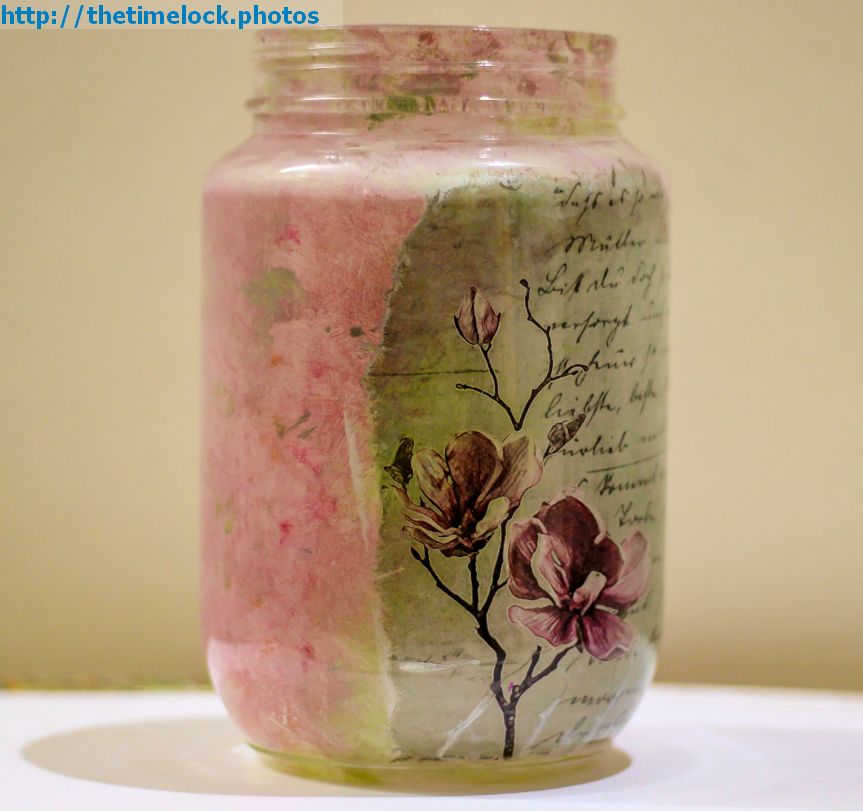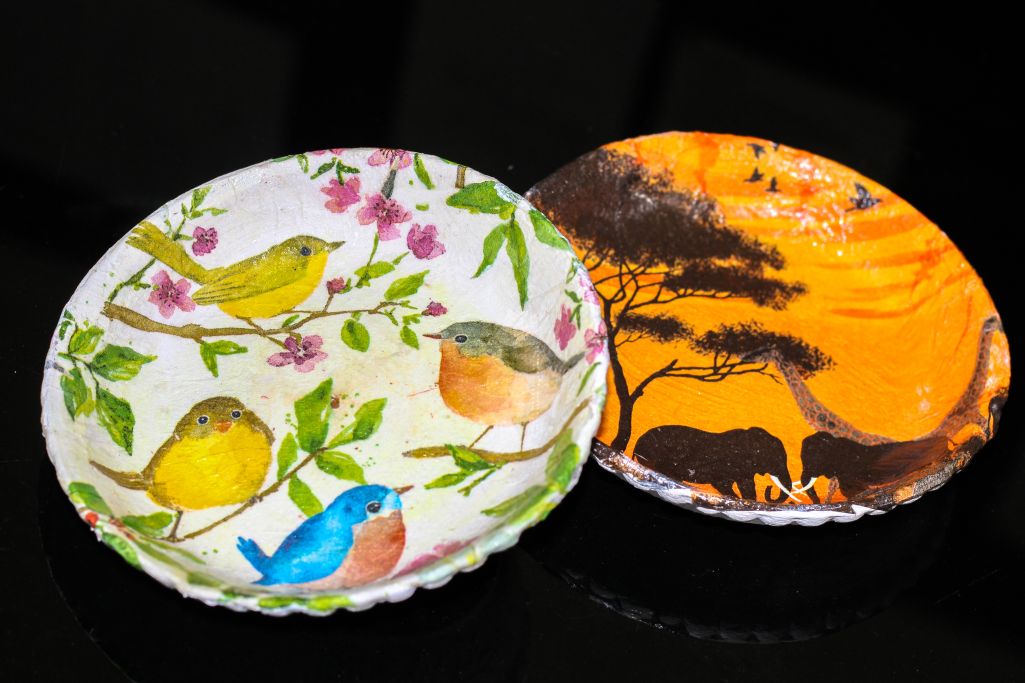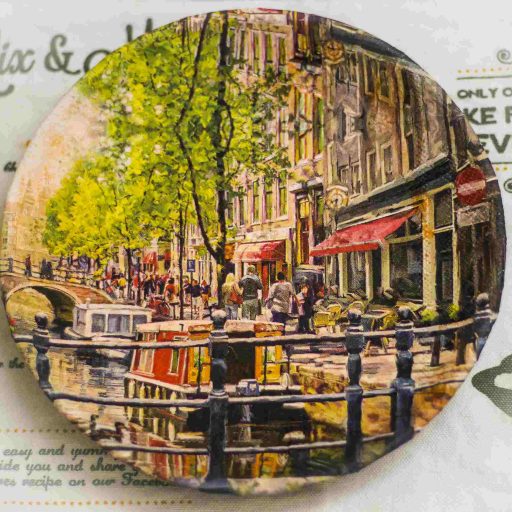Decoupage is a craft of pasting pieces of paper on any object to make it attractive. The word Decoupage originated in France from the word Decouper which means to cut or cutting out. Though decoupage flourished in all of Europe during the 1600s, it was practised in some form or the other since ancient times.
Earlier we had covered the history of decoupage in brief as part of the article about What is Decoupage.
http://www.decoupageindia.com/what-is-decoupage/
Early origins
No one knows for sure where did decoupage originate from but our best guess is that it started from Eastern cultures. As far east as East Siberia. The nomadic tribes such as Enets, Nenets, Huns, Scythians and so on. Archeological finds show the tribes decorating tombs with felts. A felt is a piece of cloth made from fibres of either plants or animals. These colourful pieces of felt were pasted on tombs as decoration.
This art moved to China where it was extensively used for decoration. The Chinese used paper instead of any other material. Cai Lun is credited with discovering the paper making process when he was a court official in Eastern Han dynasty. He discovered a new way of mixing tree bark and hemp in the year 105. Before that strips of bamboo, wood or even silk was used, mostly to write upon. The discovery of paper replaced all that as easy and cheaper option. Cai became a celebrity and till now is regarded as one of the inventors who has shaped the world.
Paper made the spread of knowledge and literacy faster. It established calligraphy and painting as the two most important art forms in China for the next hundreds of years. It made governing easy by printing official documents and forms. The military got maps and charts. It also led to the invention of paper money. Just like silk, the Chinese more of less remained secretive about their paper making process. But this did not stop them from making decorative lanterns, huge cutouts, boxes, furniture and whatever they could imagine. But it was not until the entry of lacquer or lacquerware that true decoupage came into being.
Lacquer – the shiny coat
Lac insects secrete a resin which is used to create lac. Also known as shellac, it is used in cosmetics, food glaze and to create lacquer. In ancient times lacquer was used to apply a shiny coating over wood or metal. It was an important component of artwork for the purpose of finishing. The history of lacquer is equally interesting. The word originated from the Sanskrit work laksha which stands for the number one lakh or one hundred thousand (1,00,000). The number was chosen to describe the lac bug (Tachardia Lacca Ker) which is found in abundance. Lac was harvested from this bug to get the red dye for artwork as well as for the production of shellac used for surface coating in ancient India.
In China however various evacuations have also led to the discovery of lacquer ware. Same discovered in Japan too. The findings are more than 8000 years old. Chinese made extensive use of lacquer to coat wooden furniture to a decorative finish. This technique was brought to Europe in 1600s which started the art of Decoupage.
Lacquer furniture invades Europe
Trading with Far East began taking shape due to East India companies. Dutch explorers discovered a way to circle the tip of Africa and trade flourished even more. Porcelain, silk and lacquerware were the popular items. Europeans especially liked the reflection of lights on the super shiny lacquerware. To take care of the ever growing demand, Chinese workers were brought in to Europe. The secrets and skills of Chinese were learnt by Europeans who tried to make modifications and improvements of their own. Substitutes to the original lacquer was discovered by French, German as well as Italy. Lacquer started appearing on furniture, cabinets, boxes, walls and even horse carriages.
While all this was going on furniture making in 1600s was still an expensive task. While the elite could hire and pay for original designs, but the demand and craze got so high that some innovative wood-workers decided to eliminate the design process altogether. They took pieces of art work and started pasting it directly on furniture and objects like vase. The finish was always lacquer and with it was born decoupage.
Decoupage is born
Decoupage is a French word which came into use during the 19th century. It was based on the Venetian word “lacca povera”. A person who practises decoupage is called a decoupeur.
The idea of cutting and pasting pictures and covering them with lac gained so much popularity that for the next 200 years it became a national pass-time for Venetians. Ladies bend over and snipping at pictures became a common sight. At the age of 71, Mary Delaney began drawing flowers on fine tissue paper and then cutting and pasting it. She continued to do so till the age of 88 when her eyesight gave away. Her work of art is still on display at the British Museum.
Robert Sayer printer a book in 1760 titled “The ladies Amusement” which contained illustrations for artists and instructions on how to colour, glue, cut and varnish.
Decoupage came to USA in 1928 when Hiram Manning returned to Boston inspired by Venetian furniture. After the brief interruption by World War II, decoupage picked up pace and eventually spread rapidly after 1960s. Interestingly the most popular decoupage product is the glue called Mod Podge manufactured by a company called Plaid. It was founded in 1976 by David Cunningham based out of Atlanta, USA.
After the crazy popularity during the 18th and 19th century, interest in decoupage started waning during the end of 20th century.
Modern Decoupage – the resurgence
Decoupage in itself is a captivating idea. During the 1600s it faced just one major challenge which led to a decline in interest later, the necessity to draw first. With colour printing technology firmly in place towards the end of 1900s, decoupage saw a resurgence. No longer was the need to draw or paint pictures and flowers. Printed pictures were readily available in magazines and newspapers. The next challenge was craft supplies. That was taken care by modern manufacturing and technology. Art and craft supplies were easily available and factory made. Trade and commerce made shipping times lesser than ever before. Also there was this one word which caught fancy of everyone and gave the biggest push to decoupage, ‘upscaling’.
Decoupage has really picked up in the last 25 years. Decoupage tissue papers with high quality and amazing designs are easily available. German tissue papers are especially the best quality. Mod Podge came up as a substitute for lacquer. It performs the role of a glue, sealer and finisher at the same time. Layers and layers of decoupage glue can easily stick paper on any surface and provide the shinny finish too.
Modern decoupage is done on almost anything. Mobile phone covers, purses, flower pots, canvas cloth bags and even books. Upscaling old items and recycling them is trending. Coupled with the fact that a decoupage artist need not even know how to draw at all. Decoupage classes, online tutorials, art and craft supplies are all in abundance. Almost limitless reach of social media has fuelled a renowned interest in decoupage with more and more people taking it up every day.




